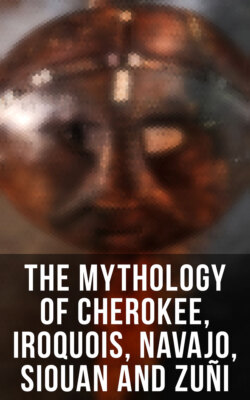Читать книгу The Mythology of Cherokee, Iroquois, Navajo, Siouan and Zuñi - James Mooney - Страница 11
На сайте Литреса книга снята с продажи.
Antiquity of Man in America
ОглавлениеTo turn to more substantial conclusions concerning the racial affinities of the Red Man, we find that it is only within very recent times that anything like a reasoned scientific argument has been arrived at. Founding upon recently acquired geological, anthropological, and linguistic knowledge, inquirers into the deeper realms of American ethnology have solved the question of how the Western Hemisphere was peopled, and the arguments they adduce are so convincing in their nature as to leave no doubt in the minds of unbiased persons.
It is now admitted that the presence of man in the Old World dates from an epoch so far distant as to be calculated only by reference to geological periods of which we know the succession but not the duration, and research has proved that the same holds good of the Western Hemisphere. Although man undoubtedly found his way from the Old World to the New, the period at which he did so is so remote that for all practical purposes he may be said to have peopled both hemispheres simultaneously. Indeed, "his relative antiquity in each has no bearing on the history of his advancement."
It is known that the American continent offers no example of the highly organized primates—for example, the larger apes—in which the Old World abounds, save man himself, and this circumstance is sufficient to prove that the human species must have reached America as strangers. Had man been native to the New World there would have been found side by side with him either existing or fossil representatives of the greater apes and other anthropoid animals which illustrate his pedigree in the Old World.
